Five Courthouses and the History Behind their Namesake Judges
Contra Costa County is home to five courthouses which are named after five judges who served on the court. Two of the five judges were elevated to the First District Court of Appeal. In this article we recount the history of each courthouse and their namesake judges.
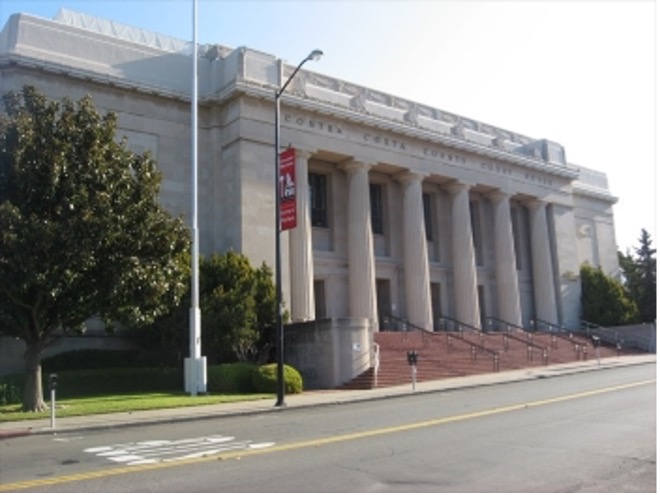 WAKEFIELD TAYLOR COURTHOUSE
WAKEFIELD TAYLOR COURTHOUSE
725 Court Street, Martinez
The Wakefield Taylor Courthouse in Martinez is the main courthouse for Contra Costa County and was named for the former Superior Court Judge and Court of Appeal Justice:
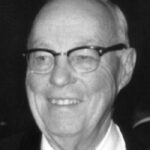 JUSTICE WAKEFIELD TAYLOR
JUSTICE WAKEFIELD TAYLOR
Justice Taylor was born in Ukiah, California and served as an officer in the U.S. Navy during World War II. He graduated from U.C. Berkeley in 1934 and received his law degree at Boalt Hall in 1937.
Justice Taylor started his legal career in Contra Costa County and was in a partnership with former Congressman John F. Baldwin. He was a Deputy District Attorney in the county and, after World War II, he served as its Chief Deputy. Members of that office were allowed to engage in their own private practice. As part of that private practice he served as the City Attorney in Antioch. He was also President of the Contra Costa County Bar Association.
In 1951, Governor Earl Warren appointed Justice Taylor to the newly created Department 5 of the Contra Costa County Superior Court, where he sat until appointed to the First Appellate District Court in 1963, where he later served as Presiding Justice. Justice Taylor was a founding member and first Chairman of Center for Judicial Education & Reform (CJER), served as Senior Presiding Justice in the First District and sat, on various occasions, as Pro Tem Justice of the Supreme Court of California. In discussing Justice Taylor with many lawyers, not one single negative word was spoken and many stated they “could not say enough kind words.” Typical comments about the Justice include he was “an excellent judge, bright, superior judicial temperament, a great gentleman judge, a grand person as well as great jurist.” “Wake” Taylor would never embarrass an attorney or a litigant by comments in open court. His method would be a quiet comment at a break, such as “come on, counsel, we can’t allow this sort of thing.” If a young attorney was making a mistake, the justice would call a recess and then in a nice manner suggest a different approach.
Justice Taylor retired in 1982 . He died in 2005 at the age of 93.[1]
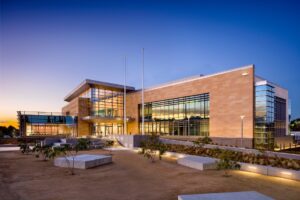 ARNASON JUSTICE CENTER
ARNASON JUSTICE CENTER
1000 Center Drive, Pittsburg
The Arnason Justice Center in Pittsburg was completed in 2010. There are seven courtrooms and the cases heard include family law, small claims, unlawful detainers, criminal and traffic proceedings and some domestic violence matters. It serves the communities of Antioch, Bay Point, Bethel Island, Brentwood, Byron, Discovery Bay, Knightsen, Oakley and Pittsburg.
JUDGE RICHARD E. ARNASON
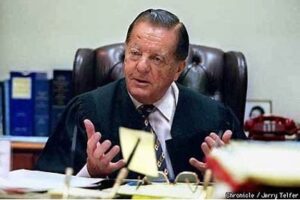 Judge Arnason was born in farming country in Hensel, North Dakota. He graduated from the University of North Dakota in 1943 and U.C. Berkeley School of Law (known then as Boalt Hall) in 1946. His interest in the law was generated by an uncle in the profession, who later became a Supreme Court justice and dean of the law school at the University of Illinois. After a medical discharge from the military, Judge Arnason worked in the shipyards while studying law.
Judge Arnason was born in farming country in Hensel, North Dakota. He graduated from the University of North Dakota in 1943 and U.C. Berkeley School of Law (known then as Boalt Hall) in 1946. His interest in the law was generated by an uncle in the profession, who later became a Supreme Court justice and dean of the law school at the University of Illinois. After a medical discharge from the military, Judge Arnason worked in the shipyards while studying law.
After graduation from law school and a brief experience in practice in Oakland, Judge Arnason came to Contra Costa County in 1949, where he became associated with, and then a partner in, the firm of Hamm, Arnason, Waldie and Rockwell.
In 1963, Judge Arnason received the call from Governor Edmund G. Brown (as pictured above) appointing him to the Contra Costa Court. After his appointment, no other Contra Costa judge has achieved the level of name recognition outside of the local legal community than Judge Arnason. He was known throughout the state because of his appointment to high profile, out-of-county criminal trials, and his handling of local cases of a similar nature. His most publicized case was tried on a special assignment to the Marin County Superior Court in 1971, when Angela Davis was charged with conspiracy and murder involving an attempted courthouse escape. This activity had caused the death of four people, including a Superior Court judge. Locally, he tried a number of death penalty and countless high-profile cases. During his tenure, he handled every type of assignment from Family Law through the Master Calendar, but his real passion was criminal justice. He served for ten years on the criminal pre-trial calendar and when he was moved from this activity to general trials, it brought unusual adverse comments from members of the criminal bar.
Known as the Dean of the Contra Costa Bench, he extended his tenure by remaining on the local court by assignment of the Judicial Council. Over the years, Judge Arnason gained a reputation as one of California’s leading experts on criminal law and procedure. He read every published criminal case that was decided by the California Court of Appeals and California Supreme Court. With his expertise, he was in constant demand for teaching assignments throughout the state, including lectures at Hastings College of Law, California Judicial College, ATLA, CEB and CJER. He was selected as the trial judge of the year in Contra Costa County, and then for the State of California.
Judge Arnason retired (more than once) but returned to the bench until his keys to the courthouse were taken away from him in 2012 and he was escorted away in a huge parade-like procession consisting of 200 members of court personnel, lawyers, and judges.
In 2015, after 50 years as a Contra Costa Superior Court judge, Judge Arnason died at the age of 94.[2]
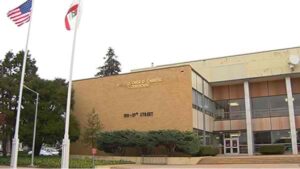 GEORGE D. CARROLL COURTHOUSE
GEORGE D. CARROLL COURTHOUSE
100 37th Street, Richmond
The George D. Carroll Courthouse in Richmond is a major symbol of the judicial system in West Contra Costa as well as a public building where residents go to serve on juries, handle traffic, unlawful detainer, and small claims matters. It serves the communities of Crockett, El Cerrito, Hercules, Kensington, North Richmond, Pinole, Point Richmond, Port Costa, Richmond, Rodeo, Rollingwood, San Pablo and Tilden Park North.
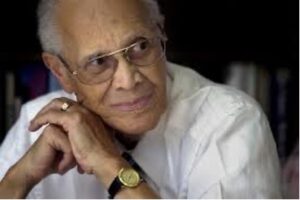 JUDGE GEORGE D. CARROLL
JUDGE GEORGE D. CARROLL
Judge Carroll was born in Brooklyn, N.Y., served in the U.S. Army during World War II and was stationed overseas in Italy. Judge Carroll graduated from Brooklyn College in 1943 and Brooklyn Law School in 1950, where he was a member of the honor society. He was admitted to the New York Bar in 1950. Judge Carroll worked at Kings County, N.Y. District Attorney’s Office for five years before switching to private practice.
Prior to his appointment to the bench, Judge Carroll won a four-year term on the Richmond City Council in 1961. Judge Carroll was elected as the first black mayor of a major American city and served as the Mayor of the City of Richmond from 1964 to 1965. Judge Carroll was a well-respected community, political, legal and judicial leader in the Richmond and Contra Costa County communities since launching his career in the 1950s and was considered a trailblazer for people of color in the political, legal and judicial communities in West Contra Costa and beyond.
Judge Carroll was a founding member of the Judicial Council of the National Bar Association which is the nation’s oldest and largest national association of predominately African-American lawyers and judges.He was also a member of numerous civic and legal organizations including the Charles Houston Bar Association, California Judges Association, American Bar Association, American Judicature Society, World Association of Judges of the World Peace Through Law Center, Board of Governors of the United Bay Area Crusade, Richmond Boys’ Club, and the Neighborhood House of North Richmond. He was a life member of the NAACP and the Sigma Pi Phi and Omega Phi Fraternities.
In 1965, Governor Edmund G. Brown appointed George D. Carroll to the Contra Costa Municipal Court, making Judge Carroll the first African American Judge to be appointed in Contra Costa County. Judge Carroll was elected and re-elected in 1970, 1976, and 1982. During his tenure, he turned down a chance to join the Superior Court bench because he wanted to continue serving in Richmond instead of moving to Martinez. “I was not born with a silver spoon in my mouth,” he said. “I’ve lived through the best of times and the worst of times” “This city took me in and allowed me to prosper.”
Judge Carroll retired in 1985. He died in 2016 at the age of 94.[3]
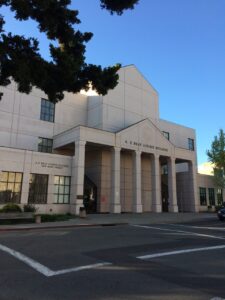 A.F. BRAY COURTHOUSE
A.F. BRAY COURTHOUSE
1020 Ward Street, Martinez
The A.F. Bray Building in Martinez houses the Law Library, Jury Services as well as nine courtrooms where general trials and criminal arraignments are heard. The courthouse was named for the former Superior Court Judge and Justice of the Court of Appeal:
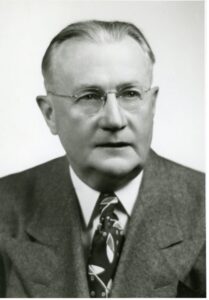 JUSTICE A. F. BRAY
JUSTICE A. F. BRAY
Justice Absalom Francis (A.F.) Bray was born in Butte, Montana and came to California in 1904 to attend Mt. Tamalpais Military Academy. Although he received an appointment to West Point, he was just short of meeting the height requirement. Rather than entering that institution when he gained his full height, Bray registered at the University of California where he embarked on a legal career. Upon graduation he studied at Hastings College of the Law, receiving his degree in 1910.
After receiving his law degree, Bray practiced in San Francisco for two years. He then moved to Martinez, joining the firm of J. E. Rodgers, later Rodgers and Bray. In 1914, he became an Assistant District Attorney for Contra Costa County. He also served as City Attorney for Martinez, Concord and Pinole.
In 1935, Governor Merriam appointed A.F. Bray to the Superior Court of Contra Costa County. He served until 1947, when Governor Earl Warren named him Justice of the District Court of Appeal in San Francisco. He became a presiding judge in 1959. Although he officially retired in 1964, Justice Bray remained active, serving part-time both in the appellate court and the Supreme Court until he was 93. His close friend Wakefield Taylor of Martinez, also a retired appellate court justice, said Bray was one of the state’s finest trial judges: A “tremendous individual” who “wrote many significant decisions.”
In 1976, he received the University of California Medal as the outstanding living alumnus of Hastings. Justice Bray was an active supporter of the University. He was a past president of the U.C. Berkeley Alumni Association and chairman of the board of Hastings College of the Law.
Justice Bray was instrumental in having the first two bridges built across Carquinez Strait. From the 1880’s on, the federal government had opposed attempts to bridge San Francisco Bay and adjacent navigable waters because of the engineering problems involved. Bray, at the time attorney for the American Toll Bridge Company, traveled to Washington, D.C., to convince the authorities the technology to build one was available. Military necessity, he argued, made a connection necessary. Therefore, construction began on a cantilever-type span over Carquinez Strait between Crockett and Vallejo. The second span was the low-grade Southern Pacific railroad bridge connecting Martinez and Benicia, replacing the famous train ferry. In recognition of his contributions toward this achievement, Bray, the Southern Pacific’s local counsel, was master of ceremonies at the dedication of the bridge.
Justice Bray died on New Year’s Day in 1987. With his keen intellect, spirit of service and breadth of interests, Justice A. F. Bray led a wonderful life and left his mark on Contra Costa County.[4]
Spinetta Family Law Center
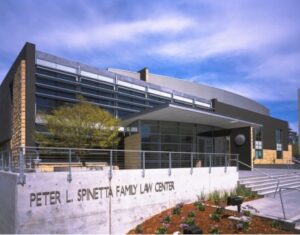 751 Pine Street, Martinez
751 Pine Street, Martinez
The Peter L. Spinetta Family Law Center in Martinez houses five of Contra Costa County’s family-law related courtrooms.
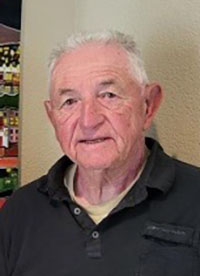 JUDGE PETER L. SPINETTA
JUDGE PETER L. SPINETTA
Judge Peter Spinetta grew up in the Temescal area of Oakland, the son of Italian immigrant parents, and attended Saint Mary’s High School. Following the receipt of his bachelor’s degree from Saint Mary’s College in Philosophy, he attended Yale University, receiving his MA in Political Science, as well as his law degree in 1968.
Harboring latent aspirations of teaching, Judge Spinetta has, over the years, taught a variety of courses in private high schools, San Francisco City College, Laney College, as well as the University of California School of Business.
Upon his admission to the California Bar, Judge Spinetta did a brief stint with the Morrison Foerster office before associating with the Alioto Law Firm in San Francisco, litigating antitrust and business competition cases. In 1971, he became one of the founding partners in Spinetta, Randick & O’Dea in Oakland. He spent the next 18 years litigating business tort and contract cases in state and federal courts with an emphasis on antitrust and Petroleum Marketing Act actions, before being appointed to the Bench in June 1989.
In 1989, Governor George Deukmajian appointed Judge Spinetta to the Contra Costa Superior Court. Prior to taking over Presiding Judge Patsey’s fast track department, Judge Spinetta’s initial transitional challenge as a new judge was to familiarize himself with criminal sentencing statutes, which he likened to the process of learning future interests in law school. The transition was merely one of law, however, and not philosophy. Judge Spinetta felt that being a judge gave him the opportunity to deal with values of right and wrong in the law versus the advocate’s role of achieving a win.
Peter L. Spinetta served as a Contra Costa Superior Court Judge until his retirement in 2007.[5]
[1] Source: San Francisco Chronicle, Contra Costa County Law Library
[2] Source: Bay Area News Group, Contra Costa County Law Library
[3] Source: Bay Area News Group, Contra Costa County Board of Supervisors, Wikipedia